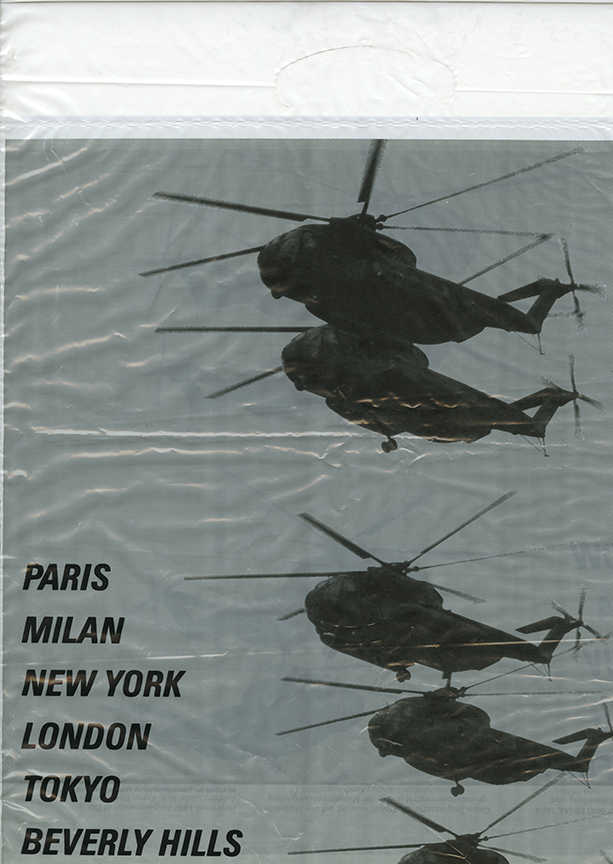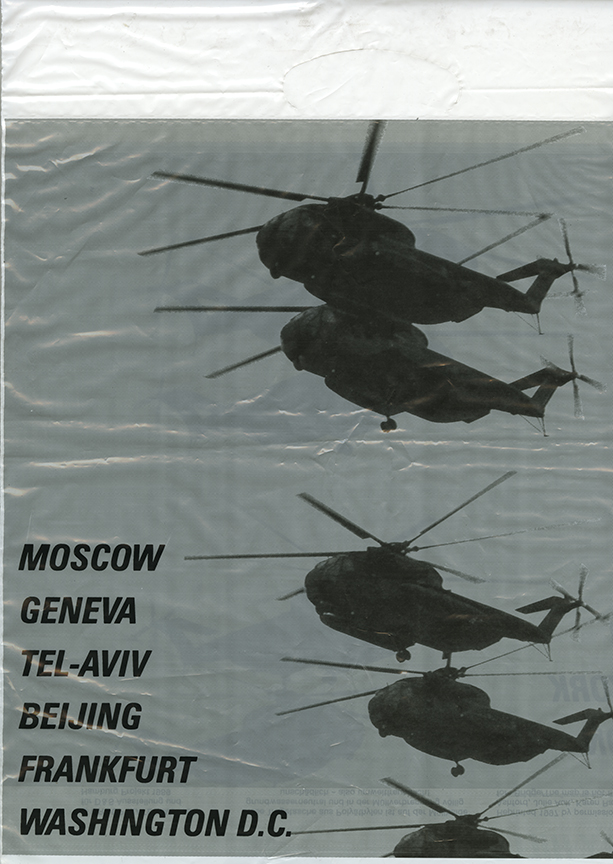Shopping Bag, produced for D&S Austellung, Kunstverein Hamburg, 14 October – 26 November, 1989.
“… less than ever does a simple reproduction of reality express something about reality. A photograph of the Krupp works or the A.E.G. reveals almost nothing about these institutions…. Therefore, something must be constructed, something artificial, something fabricated.” – Bertolt Brecht.
In the summer of 1989 Group Material went to Hamburg, invited by the Kunstverein there to produce a project outside the museum as part of their ‘D&S’ exhibition. We were to stay in the city for five days to research the site and present the organizers with a proposal. Our research was two days of very pleasant strolling through the downtown business district. We shopped a lot.
In Germany you can’t help but think about war. We talked about the idea of “post-war” alliances and military industries as we stepped in and out of boutiques and stores. The seemingly infinite arcades of Hamburg make a sort of urbanized American mall, a concentration of consumer bliss easily traversed by foot. Our conversation on war at first seemed strangely artificial in this, the more familiar nightmare of consumption, out of place amongst the warm wood paneling and chrome counters. We realized that any legal attempt to divert attention from these glitzy displays toward some sort of artwork about military weaponry would be futile. So we shopped some more.
In large part, the consumer affluence that we were taking part in, was and is a direct result of a history of military and economic domination by strong countries over smaller ones, multinational interests over local concerns, and profits over people. Behind each cash register is an intricate geography of demographics and battle-plans. There, the capitals of fashion and armaments neatly coexist.
The proliferating global informational order and its expanding communications and media systems has increasingly blurred the definitions of ‘public’ and ‘private.’ Our ‘public’ work, something with a practical function, would be seen in use on the streets of Hamburg as it made its way into the ‘private’ space of the home.
The shopping bag replaced the usual ones in a large department store and a variety of smaller shops for the duration of the exhibition. It was a reproduction of a connection, a fabrication that people could take with them.
Group Material, (Doug Ashford, Julie Ault, Felix Gonzalez-Torres, Karen Ramspacher) 1989
From: “Exhibition Statement,” published in Art Papers, _(link)



